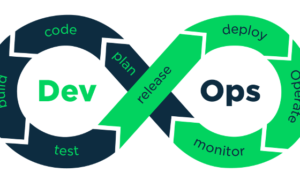Step into the dynamic realm of consumer technologies! In this swiftly evolving digital age, revolutionary innovations seem to emerge around every corner. From intelligent devices streamlining home automation to immersive virtual reality experiences transporting us to alternate dimensions, these novel technologies have profoundly reshaped our lifestyle, work patterns, and interactions with the world. But are they universally beneficial? Today, we delve into an in-depth exploration of the pros and cons associated with embracing these cutting-edge marvels.
Introduction: Understanding Consumer Technology
Consumer technology encompasses the practical application of scientific knowledge, particularly within industries and commerce. It is also referred to as applied science or engineering. The scope of consumer technology encompasses a diverse array of products and services, including automobiles, household appliances, electronics, computers and software, medical apparatus, equipment, and office machinery.
Benefits of Embracing New Consumer Technologies
The spectrum of advantages associated with adopting novel consumer technologies is extensive. Primarily, they enhance convenience and simplicity in our lives while economizing time and finances. Moreover, these advancements facilitate interpersonal connections, keep us abreast of contemporary news and trends, and offer entertainment.
Yet, it is imperative to recognize that there are corresponding drawbacks to the utilization of emerging consumer technologies. Notably, they can impose significant financial burdens and necessitate frequent upgrades. Furthermore, the potential for addictive usage leading to social seclusion exists. Additionally, the surplus of information they bring forth can culminate in information overload, jeopardizing concentration on crucial tasks.
Upsides of Embracing Novel Consumer Technologies
The landscape of consumer technology, marked by its perpetual evolution, presents both exciting prospects and daunting challenges for enterprises. On one hand, fresh technologies can confer a competitive edge and unveil untapped markets. On the other hand, their adoption can entail substantial expenses and logistical complexities.
In deciding whether to embrace emerging consumer technologies, a meticulous weighing of the benefits and drawbacks is imperative. Here are several key factors to consider:
Pros:
- Novel technologies confer a competitive advantage to your business.
- They broaden your reach, enabling penetration into novel customer segments and markets.
- They amplify efficiency and productivity within your organizational framework.
Cons:
- The adoption and implementation of new technologies can prove costly.
- Their integration often necessitates substantial adjustments to existing business processes and infrastructure.
- They might precipitate security vulnerabilities or privacy concerns for both customers and employees.
Drawbacks of Embracing Innovative Consumer Technologies
Several potential downsides warrant contemplation before investing in state-of-the-art consumer technologies. Primarily, new technologies might exhibit steep costs without commensurate features or functionality, casting doubt on their value proposition. Compatibility issues with existing devices or systems can also frustrate users, resulting in time wastage and aggravation. Furthermore, the risk of a new technology failing to meet expectations is ever-present, culminating in the possession of an expensive yet ineffective tool.
Potential Impacts of Technology Adoption
Undoubtedly, the integration of new consumer technologies holds substantial potential to revolutionize our lifestyles and work practices. However, akin to any nascent technology, they are accompanied by prospective risks and drawbacks. Here, we outline potential impacts:
Positive Impacts:
Elevated productivity and efficiency: Fresh technologies enable smarter and swifter work processes, yielding augmented productivity and efficiency.
Enhanced communication and collaboration: These technologies facilitate streamlined connections, enriching communication and collaboration both within organizations and across individuals.
Informed decision-making: Amplified access to information empowers better decision-making, spanning personal and professional spheres.
Augmented convenience and flexibility: Emerging technologies frequently introduce heightened convenience and flexibility, permitting activities like remote shopping, banking, and work.
Expanded learning avenues: New technologies engender novel learning avenues, encompassing online courses, articles, and videos.
Negative Impacts:
Employment repercussions: An overarching concern accompanying new technologies is potential job displacement, as machines progressively assume roles presently undertaken by humans. It is pertinent to acknowledge that technology has historically generated novel employment opportunities.
Guidelines for Evaluating Suitability
In the realm of technology, a universal solution is elusive. The efficacy of a technology hinges upon its alignment with individual or business needs. Amidst the expansive array of alternatives, arriving at a verdict on the aptness of a particular technology can be challenging. Several considerations are pivotal in this determination:
Relevance to requirements: Scrutinize the extent to which a technology addresses your objectives. Essential needs may warrant investment, while discretionary desires might be best reserved for instances of affordability and maturity.
Financial implications: Gauge the financial outlay associated with the technology. Does it align with your budget? If not, are you prepared for upfront expenses or recurring fees?
Learning curve: Assess the technology’s user-friendliness. Does it necessitate substantial training? The intuitiveness of the technology can significantly influence its viability.
Risk assessment: Identify potential risks tied to technology utilization. Does it carry data security or privacy hazards? Examine these dimensions comprehensively.
Strategies to Mitigate Risk
Prudent navigation of new consumer technologies involves risk mitigation. Implementing the following strategies can prove invaluable:
Comprehensive research: Avoid hasty adoption of trends; delve into the technology’s capabilities and potential. This informed approach guides decision-making.
Gradual implementation: Experiment on a limited scale if uncertainties persist. This permits exploration without undue commitment.
Prudent data sharing: Exercise discretion when sharing personal information online, especially on less-established platforms. Prioritize caution over undue risk.
Vigilance in updates: Consistently update the technology to ensure compliance with security patches and updates, thereby minimizing vulnerabilities.
By heeding these strategies, the inherent risks of embracing new consumer technologies can be effectively minimized.
Conclusion
The embrace of emerging consumer technologies is not devoid of risks. Striking a balance between staying abreast of trends and evaluating the net advantages of a technology can be challenging. Nevertheless, judicious investment in consumer technologies can yield substantial benefits. Ranging from heightened access to entertainment and superior communication tools to enhanced data security and privacy, the merits underscore the significance of exploring this avenue.



































